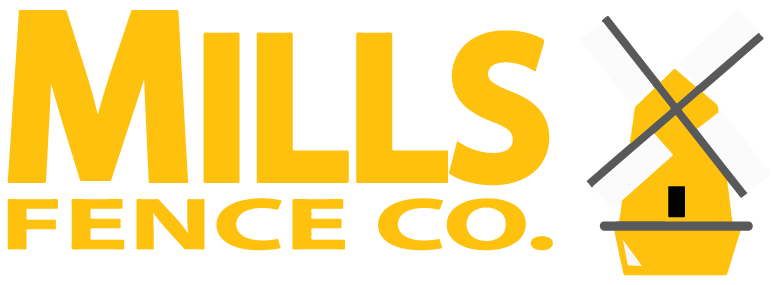7 Tips for Your DIY Fence Projects
Building a fence DIY style is a rewarding way to enhance your property by adding privacy, security, or a touch of personal style. However, like any home improvement project, it requires careful planning and execution to get the best results.
With the right amount of patience (and maybe a good friend or two), you can make your fence dreams come true without calling in the pros. The experts at Mills are always here to help you when you need us, but we support your ambition. Whether you’re a seasoned DIYer or a first-timer, these seven will help ensure your DIY fence project is successful.
Choose the Right Fence for Your Needs
Before you begin, your first order of business is identifying the purpose of your fence. Is it for privacy and security, to keep the dogs in, or to define your property line? Starting with the end goal in mind can help guide your choice of materials, design, and fence height. For example, a privacy fence will need solid panels, while a decorative fence may only require spaced pickets.
In addition to the purpose of your fence, consider your climate, how committed you are to maintenance, and, of course, your budget. Wood fences provide a classic, timeless look but require regular upkeep, while vinyl and metal are low-maintenance alternatives.
Talk to Any Neighbors Before Getting Started
If your fence is going up along a shared property line, which is the case in many residential neighborhoods, it’s essential to communicate with your neighbors before you start digging. Open communication can prevent misunderstandings, especially if your fence will affect their view or access. There’s also a positive side to proactive communication – neighbors may be willing to split costs if they’ll benefit from the new fence.
While we recommend talking with those around you as a courtesy, in some areas, local regulations may actually require you to notify neighbors when building a fence, even if it’s a DIY project. Regardless of the legislation, a quick conversation could save you from future headaches.
Check Local Zoning Laws and Permits
Most cities and municipalities have regulations regarding fence height, materials, and placement. Before breaking ground, contact your local zoning department to see if you need a permit or if there are any restrictions on your project.
Another key step to add to your checklist before starting your project is contacting a utility marking service. A service like “811” can help identify any underground utilities before you start digging. The last thing you want to do is accidentally hit gas, water, or power lines during construction, and a brief call protects you from major liability.
Choose Quality Products from a Reputable Supplier
It doesn’t matter if you’re the best DIYer in the world if you use sub-par products aside from your craftsmanship. The materials you use will significantly impact the durability and longevity of your fence. Opt for high-quality wood, vinyl, or metal from a reputable supplier, like Mills, and you’ll have confidence knowing your fence can stand up to the elements over time.
Fences are an investment that should last for many years. Opting for cheaper, low-grade materials may save money upfront but could lead to costly repairs or replacements down the road.
Plan Your Layout and Measurements Carefully
Before purchasing materials, it’s critical to take accurate measurements of your property. Use stakes and string to outline where you intend to install your fence and confirm that the layout is straight and evenly spaced. It’s much easier to make adjustments before putting anything permanent in the ground.
Posts are typically spaced 6 to 8 feet apart, but this can vary depending on the type of fence. Double-check your measurements and mark where each post will go. Trust us, like any DIY project, you’ll thank yourself for the extra preparation later.
Install Sturdy Posts for Stability
Fence posts support your entire fence, and installing them incorrectly could put its structural integrity at risk. Posts should be buried at least one-third of their total height in the ground, typically 2 to 3 feet deep.
For added stability, set your posts in concrete. Adding extra stability is especially important in areas prone to high winds. Allow the concrete to fully cure before attaching the fence panels or rails to ensure maximum strength.
Consider Finishing Touches and Long-Term Care
Once your fence is installed, it’s time to add the finishing touches. If you’re using wood, applying a weatherproof sealant or stain will protect it from rot, moisture, and UV damage. Vinyl and metal fences may need less maintenance, but regular cleaning and inspection will help keep them in good condition.
Lastly, consider adding decorative touches like post caps, lighting, or landscaping around your fence to complete the look and boost curb appeal!
Every Fence Project Starts at Mills
While we’re known for being one of the Tri-State’s premier fence installers, we also support everyone who wants to go the DIY route for their fence project. Mills Fence proudly offers the highest quality wholesale materials at competitive prices.
Regardless of which type of fence you’re installing, every project starts with a call to Mills. Browse our online catalog today, and contact us with any questions before you begin.
